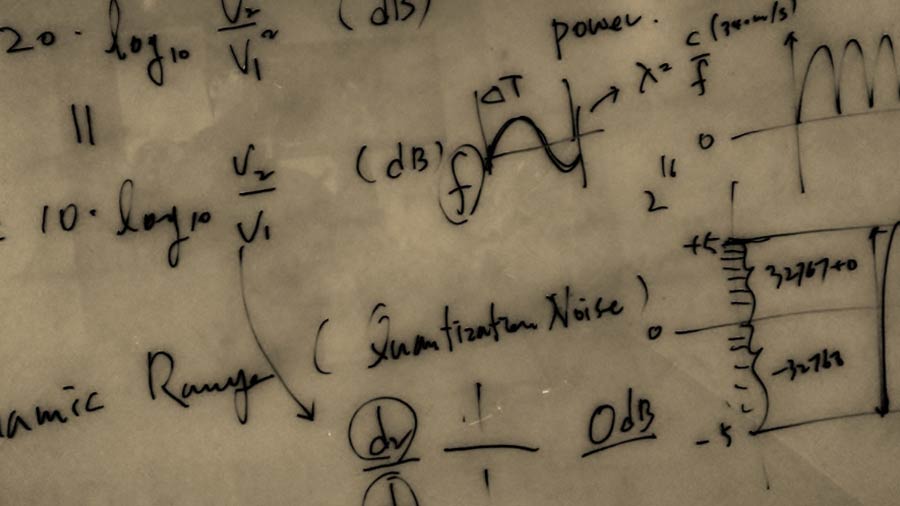What is Music Theory?
Music theory is the language of music. It is a set of principles and concepts that musicians use to understand, analyze, and create music. By studying music theory, you will gain a deeper understanding of how music works, including elements such as harmony, melody, rhythm, and structure.
Why Learn Music Theory?
Learning music theory is essential for several reasons. Firstly, it enhances your overall musical development and helps you become a better musician. It provides a framework for understanding music, making it easier to analyze and appreciate different genres and styles.
Secondly, music theory helps you break through creative blocks and provides a toolbox of techniques to inspire and inform your musical compositions. By understanding the principles of harmony, melody, and rhythm, you can make informed decisions when creating chord progressions, melodies, and arrangements.
Additionally, studying music theory improves your critical listening skills and deepens your music appreciation. It allows you to understand the intricacies and nuances of musical compositions, making it easier to recognise patterns, identify chord progressions, and appreciate the music from.
Lastly, music theory can also benefit your practical music skills. It can improve your improvisation abilities, help you develop more effective song arrangements, and enhance your understanding of musical form. Whether you're a beginner or an advanced musician, learning music theory will enrich your musical journey.
The Basics of Music Theory Musical Notes and Intervals
At the core of music theory are musical notes and intervals. Musical notes are the building blocks of music, and they are represented by letters of the musical alphabet: A, B, C, D, E, F, and G. These notes can be played on various instruments and sung by vocalists.
Intervals, on the other hand, measure the distance between two notes. They are measured in half steps (semitones) and whole steps (whole tones). The interval between C and D is one whole step, while the interval between C and C# (C sharp) is a half step.
The Music Alphabet
The musical alphabet consists of seven letters. These letters represent specific pitches in music. The alphabet repeats itself in octaves, meaning that after G, the sequence starts again with A.
The 12 Keys of Music
In Western music, there are 12 notes in the octave, including both natural notes and sharps/flats. The 12 keys of music are A, A#/B♭, B, C, C#/D♭, D, D#/E♭, E, F, F#/G♭, G, and G#/A♭. Each key has its own unique sound and character, and they are essential for understanding harmony and melody.
Intervals
Intervals measure the distance between two notes. They can be classified as either a half step or a whole step. Intervals are the foundation of harmony and melody. When two or more notes are played simultaneously, they create harmonic intervals, also known as chords. When notes are played in succession, they create melodic intervals, also known as melodies.
Octaves
Octaves are the next set of the same notes that are either higher or lower in pitch. For example, on a piano, you can play the middle C and can play the same C further down or higher up with a different pitch. Octaves are essential for understanding pitch relationships and transposing music to different keys.
Key Signatures
Key signatures let you know what notes in a scale are sharp (♯) or flat (♭). They indicate the tonal centre or key of a piece of music. Key signatures are crucial for understanding the structure and tonality of a composition, as they determine which notes are used in the melody and harmony.
Scales and Modes Music Scales
Music scales are sets of notes arranged in ascending or descending order. They provide the foundation for creating melodies and harmonies. There are several scales, but the two main types are the major and minor scales.
Major Scales
The major scale is one of Western music's most common and widely used scales. It has a bright and uplifting sound. The major scale follows a specific pattern of intervals: whole-whole-half-whole-whole-whole-half, represented by the formula W-W-H-W-W-W-H. The C-major scale consists of the notes C, D, E, F, G, A, and B.
Minor Scales
The minor scale has a darker and more emotional sound than the major scale. Like the major scale, the minor scale follows a specific pattern of intervals: whole-half-whole-whole-half-whole-whole, represented by the formula W-H- W-W-H-W-W. The minor scale has three variations: harmonic, natural and melodic.
Scale Degrees
Scale degrees indicate the function and position of a note within a scale. The seven scale degrees are tonic, supertonic, mediant, subdominant, dominant, submediant, and leading tone. These names are universal and apply to both major and minor scales.
Music Modes
Music modes are scales derived from a parent scale. They share the same notes and interval patterns as the parent scale but start on a different note, creating a distinct tonal centre. Ionian, Lydian, Dorian, Phrygian, Aeolian, Mixolydian, and Locrian are the seven music modes. Each mode has its own unique sound and characteristic.
Harmony and Chords Musical Chords
Chords can be played either open or closed, which means at the same time or separated. A chord is made up of two or more notes that are played simultaneously. They provide the foundation for harmony in music. Chords can be created from any note, and there are many different types of chords, including minor, major, diminished, and augmented chords.
Triad Chords
Triads are the most basic chords and consist of three notes: the root, the third, and the fifth. A root note is the starting note of the chord, the third is a specific interval above the root, and the fifth is another interval above the root. Triads are the building blocks for more complex chords.
Seventh Chords
Seventh chords add a fourth note on top of the basic triad. They provide additional richness and complexity to the harmony. There are different types of seventh chords, including major seventh, minor seventh, dominant seventh, diminished seventh and half-diminished seventh chords.
Major Chords
Major chords have a bright and happy sound. They consist of a root note, a major third, and a perfect fifth. The C major chord is made up of the notes C, E and G. Major chords are commonly used in various genres of music and are essential for understanding harmony.
Minor Chords
Minor chords have a darker and more somber sound compared to major chords. These types of chords include a root note, a minor third note, and a perfect fifth. For example, a C-minor chord would have the notes C, E♭, and G. Minor chords are widely used in various genres, including classical, jazz, and pop music.
Diminished Chords
Diminished chords have a tense and dissonant sound. They have a root note, a minor third, and a diminished fifth. For example, a C diminished chord consists of the notes C, E♭, and G♭. Diminished chords are often used to create tension and suspense in music.
Augmented Chords
Augmented chords have a unique and unsettled sound. They consist of a root note, a major third, and an augmented fifth. For example, a C-augmented chord consists of the notes C, E, and G#. Augmented chords are less commonly used than major and minor chords but can add interesting colour to a chord progression.
Chord Extensions
Chord extensions are additional notes added to the basic triad beyond the seventh. They create a richer and more harmonically complex sound. Common extensions include the ninth, eleventh, and thirteenth. Extended chords provide more possibilities for creating interesting and unique chord progressions.
Chord Inversions
A chord inversion is a variation of the same chord. They involve changing the order of the notes while retaining the same pitches. Inversions add variety and smoothness to chord progressions. The most common inversions are the first inversion, where the third becomes the bass note, and the second inversion, where the fifth becomes the bass note.
What is Melody?
A melody is a combination of notes that are played in sequence to create a musical phrase. It is often the most memorable and recognizable part of a song. Melodies can be produced with instruments or vocals and are made up of two or more notes that sound pleasing together.
Melodic Motion
Melodic motion refers to the movement between notes in a melody. There are two types of melodic motion. Conjunct motion occurs when notes move by whole or half steps, resulting in shorter leaps between notes. Disjunct motion involves larger intervals and larger leaps between notes.
What is Rhythm?
Rhythm is an essential element of music that refers to the timing and duration of notes and rests. It is the human perception of time in music. Rhythm creates a sense of pulse and propels the music forward. It also involves patterns of strong and weak beats and accents placed on specific notes.
Beat and Meter
The beat is a repeating pulse that underlies a musical pattern. It provides a steady rhythm and serves as the foundation for the music. The meter is a specific pattern of strong and weak beats that repeat throughout a song. Common meters include 4/4 (four beats per measure) and 3/4 (three beats per measure).
Time Signature and Tempo
The time signature is used to indicate the number of beats per measure. It is represented as a fraction at the beginning of a musical piece. Tempo, however, refers to the speed at which a piece of music is played. It is usually indicated by a BPM (beats per minute) marking.
Strong and Weak Beats
In music, specific beats are emphasized more than others. Strong beats, also known as downbeats, are the beats that receive the most emphasis. Weak beats, or offbeats, are the beats that fall between the strong beats. The interplay between strong and weak beats creates rhythmic patterns and adds interest to the music.
Syncopation and Accents
Syncopation refers to rhythms that accent or emphasize the offbeats. It creates a sense of anticipation and adds a syncopated or "off-the-beat" feel to the music. Accents, on the other hand, refer to the intensity or emphasis placed on specific notes. Accented notes are played with more force or emphasis than unaccented notes.
Voice Leading and Counterpoint: What is Voice Leading?
Voice leading is the relationship between two or more melodic lines or voices played simultaneously. It focuses on creating smooth and logical movement between the voices to create a harmonious and pleasing sound. Voice leading involves considering the individual melodic lines and how they interact with each other.
Counterpoint in Music
Counterpoint is a technique in music where two or more melodies or voices work together to create harmonies. The melodies are interdependent, meaning they rely on each other to create a sense of harmony. Counterpoint can be simple or complex, and it adds depth and complexity to a musical composition.
What are Chord Progressions?
Chord progressions are chord sequences that form a musical piece's backbone. They provide the harmonic structure and support for melodies and lyrics.
Roman Numeral Analysis
Roman numeral analysis is a system used to analyze and notate chord progressions. It assigns Roman numerals to each chord based on its position within a scale. Uppercase Roman numerals represent major chords, while lowercase numerals represent minor chords. Roman numeral analysis helps musicians understand the harmonic relationships between chords in a progression.
Voice Leading in Chord Progressions
Voice leading is crucial in creating smooth and logical chord progressions. It involves considering the individual notes in each chord and how they move from one chord to the next. Smooth voice leading minimises large leaps between notes and creates a sense of continuity and flow in the music.
Dynamics and Musical Expression The Importance of Dynamics
Dynamics refers to the variation in volume or intensity in music. It adds depth, emotion, and expression to a musical performance. Dynamics can be indicated by symbols or terms such as pianissimo (very soft), piano (soft), mezzo-piano (moderately soft), mezzo-forte (moderately loud), forte (loud), and fortissimo (very loud).
Musical Expression and Phrasing
Musical expression is the interpretation and communication of emotions and feelings through music. It involves using dynamics, articulation, and phrasing to convey a musical piece's intended mood or message. Phrasing refers to the grouping and shaping of musical phrases to create a sense of musicality and flow.
Applying Music Theory
Music Theory in Songwriting and Composition
Understanding music theory can greatly enhance your songwriting and composition skills. It provides a framework for creating chord progressions, melodies, and harmonies that work well together. Music theory can also help you make informed decisions about song structure, key changes, and modulation.
Music Theory in Performance and Improvisation
Music theory can still benefit your performance and improvisation skills even if you primarily play an instrument or sing without composing. It helps you understand the underlying structure and harmonic relationships in the music you're playing. This understanding allows you to make informed choices and create more interesting and expressive performances.
Music Theory in Arranging and Production
Music theory is essential in arranging and production, where you adapt an existing piece of music for different instruments or settings. Understanding music theory helps you choose appropriate chords, create interesting harmonies, and arrange the various musical elements cohesively and pleasingly.
Resources for Further Learning Online Music Theory Courses
There are online courses and tutorials available that go into music theory in more depth. Websites like Coursera, Udemy, and Skillshare offer courses for beginners and advanced learners. These courses often include video lessons, quizzes, and assignments to reinforce your understanding of the material.
Books on Music Theory
Books are another valuable resource for learning music theory. Many excellent books cover various aspects of music theory, from beginner-level to advanced topics. Some popular titles include "Music Theory for Dummies" by Michael Pilhofer and Holly Day, "Tonal Harmony" by Stefan Kostka and Dorothy Payne, and "The Complete Idiot's Guide to Music Theory" by Michael Miller.
Music Theory Apps and Software
There are several music theory apps that can help you practice and reinforce your knowledge. These apps often include interactive exercises, quizzes, and ear training exercises to improve your skills. Some popular apps include "Music Theory Pro" for iOS and "Complete Music Reading Trainer" for Android.
Music Theory (Frequently Asked Questions)
Why is music theory important?
Music theory is the backbone of understanding how music works. It provides a framework for analyzing, composing, and performing music. By studying music theory, you gain a deeper understanding of musical concepts such as melody, harmony, rhythm, and form. This knowledge lets you communicate with other musicians, read sheet music, and make informed musical decisions. Understanding music theory also enables you to explore different genres and styles of music. It empowers you to analyze and appreciate the compositions of renowned musicians throughout history. Moreover, music theory provides a solid foundation for advanced musical studies, such as composition, arrangement, and musicology.
Can I play music without knowing music theory?
Certainly! Many musicians have learned to play music by ear or through informal instruction without formal music theory training. However, learning music theory can significantly enhance your musical abilities. It provides a deeper understanding of your music, allowing you to interpret and express it more effectively.
Music theory expands your musical vocabulary, enabling you to explore new techniques, styles, and genres. It helps you understand the underlying structure of a piece of music, making it easier to memorize and perform. Additionally, music theory equips you with the necessary tools to communicate and collaborate with other musicians, enhancing your overall musical experience.
Why is music theory centred on the piano keyboard?
The piano keyboard is often used as a visual representation of music theory due to its unique advantages. Firstly, the keyboard provides a clear and concise layout of all the notes within an octave, making it easier to visualise and understand musical concepts.
Secondly, the piano's tuning is based on the equal temperament system, which divides the octave into 12 equal intervals. This system allows for easy transposition and modulation between different keys. The linear arrangement of the piano keyboard facilitates the visualisation of intervals and chord structures, making it the ideal tool for teaching and learning music theory.
Is there a quick and easy way to learn to read music?
Learning to read music may seem complicated, but it can become second nature with consistent practice and the right approach. The treble and bass clefs are as follows: Treble CLEF (Lines): (EGBDF). Treble clef (spaces): FACE. Bass clef (lines): Good Boys Do Fine Always (GBDFA). Bass clef (spaces): All Cows Eat Grass (ACEG).
Using these mnemonics, you can quickly associate the notes on the staff with their corresponding positions on the keyboard or other instruments. Regular practice and exposure to sheet music will further solidify your reading skills.
How do I identify a key based on the key signature?
Identifying the key of a piece of music based on the critical signature requires some knowledge of sharps and flats. If the key signature has sharps, the last sharp in the key signature indicates the leading tone of the major key. To determine the primary key, add one note from the previous short. The relative minor key is a little third down from the primary key.
Can I transpose a piece of music into another key?
Transposing a piece of music into another key is a valuable skill for musicians. To transpose a bit, you can either move every note up or down by the same interval or use the scale degrees of the original piece to play the same scale degrees in the new key.
Transposition allows you to adapt music to different instruments, vocal ranges, or personal preferences. It is beneficial when accompanying singers or playing in groups with agencies in other keys. Transposing also aids in developing a deeper understanding of harmonic relationships and the overall structure of a piece.
Will learning music theory hinder my ability to improvise?
Learning music theory does not hinder your ability to improvise but enhances it. Understanding chord progressions, scales, and melodic patterns through music theory provides a solid foundation for improvisation.
Music theory helps you recognize and internalize common harmonic progressions, allowing you to make informed choices while improvising. It provides a language and framework for improvisation, enabling you to express your musical ideas more effectively. The more you understand music theory, the more freedom and creativity you can bring to your improvisations.
Do I need to know the theory if I play drums?
While some drummers may believe that music theory is not necessary for their instrument, having a basic understanding of music theory can significantly enhance your drumming skills. Rhythm, timing, and dynamics are essential to drumming; music theory provides a more profound knowledge of these elements.
By learning music theory, drummers can better communicate with other musicians, understand the structure of a piece, and contribute more effectively to the overall musical arrangement. Understanding time signatures, note values, and musical form allows drummers to create engaging rhythmic patterns.
Where do the 12 musical notes come from?
The origin of the 12 musical notes used in Western music can be traced back to various historical and cultural influences. One theory suggests that the choice of 12 letters is based on the mathematical division of the octave. Twelve can be divided evenly by 2, 3, and 4, resulting in a convenient division of tones within an octave.
Another theory attributes the 12-note system to the ancient Greek mathematician Pythagoras, who believed in the cultural significance of 12. Pythagoras constructed a Circle of Fifths with 12 points, which influenced the development of musical scales. It is important to note that non-Western musical systems may employ different numbers of pitches or use microtonal intervals, highlighting the cultural diversity and richness of music worldwide.
How does knowing theory help me memorise a piece of music?
Music theory provides valuable insights into the structure and organization of a piece of music, making it easier to memorize. You can anticipate what comes next in a composition by understanding key signatures, chord progressions, and melodic patterns.
Knowing scales, chords, and intervals allows you to quickly identify recurring patterns and themes within a piece, aiding in memorization. Additionally, understanding the form and compositional techniques used in a bit gives you a roadmap to follow, making it easier to navigate through the music and recall it from memory.
What are some essential music theory concepts for beginners?
For beginners, grasping foundational music theory concepts can provide a solid starting point for further musical growth. Learn the names of the notes on the staff and their corresponding positions on your instrument. Scales and key signatures: Familiarize yourself with major and minor scales and their key signatures.
Understand the distance between two notes and how they relate. Learn the primary triads (major, minor, diminished) and their inversions. Develop a sense of time and learn to read different rhythmic patterns. Be comfortable reading sheet music and understanding common symbols and terms. Mastering these fundamental concepts will give you a strong foundation for further exploration and advancement in music theory.
How can music theory benefit a music student?
Music theory offers numerous benefits to music students of all levels. Here are some ways music theory can enhance your musical journey: Comprehension: Understanding music theory enables you to analyse and appreciate the compositions of various genres and styles. Music theory is essential for musicians as it helps them communicate and collaborate effectively. With a solid understanding of music theory, you can compose and arrange existing pieces.
Music theory enhances your interpretive skills, enabling you to express a piece's intended emotions and nuances. Music theory provides a framework for improvisation, guiding your choices and enhancing your creativity. Music theory is a foundation for advanced studies in music, such as musicology or composition. Incorporating music theory into your musical studies can broaden your musical horizons, deepen your understanding, and unlock new creative possibilities.
What is the best way to learn music theory?
The best way to learn music theory is to combine studying the principles and concepts with practical application. Start by learning the basics of music notation, scales, and chords. Then, apply what you've learned by practising on your instrument or composing your own music. It's also helpful to listen to a wide variety of music and analyze the chord progressions and melodies.
Do I need to learn music theory to play an instrument?
While it's not necessary to have an in-depth knowledge of music theory to play an instrument, it can greatly enhance your understanding and abilities. Music theory provides a framework for understanding music, which can help you learn songs more quickly, improvise, and communicate with other musicians.
How long does it take to learn music theory?
The time it takes to learn music theory depends on various factors, including your prior musical experience, the amount of time you dedicate to studying, and your learning style. With consistent practice and study, you can gain a solid foundation in music theory within a few months to a year. However, music theory is a lifelong pursuit; there is always more to learn and explore.
Can I skip learning music theory and play by ear?
While playing by ear is a valuable skill, learning music theory can significantly enhance your abilities as a musician. Music theory provides a deeper understanding of music's underlying structure and principles, which can inform your improvisation, composition, and interpretation. You can become a well-rounded and versatile musician by combining playing by ear and understanding music theory.
Congratulations! You've completed our music theory for beginners course. We've covered the basics of music theory, including notes, intervals, scales, chords, melody, rhythm, harmony, and more. Remember that music theory is a tool to help you understand and communicate the language of music. It's not a set of rules restricting your creativity but a framework to inspire and inform your musical journey. Keep practising, exploring, and creating music, and don't forget to have fun along the way!
Up Next: 10 Best Music Theory Podcasts












